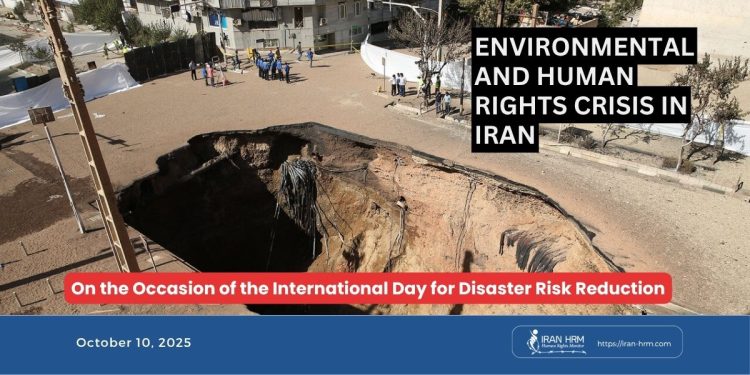October 13 marks the International Day for Disaster Risk Reduction, established by the United Nations to promote a global culture of prevention and preparedness. According to the Sendai Framework for Disaster Risk Reduction (2015–2030), governments are obliged to prevent new crisis, reduce existing ones, and ensure community participation.
Under the mullahs’ regime in Iran, the situation is the opposite. Drying rivers and lakes, land subsidence, nationwide water shortages, recurring blackouts, and the militarization of disaster management show that the ruling regime has not only failed to reduce risk — it has become the primary producer of risk itself.
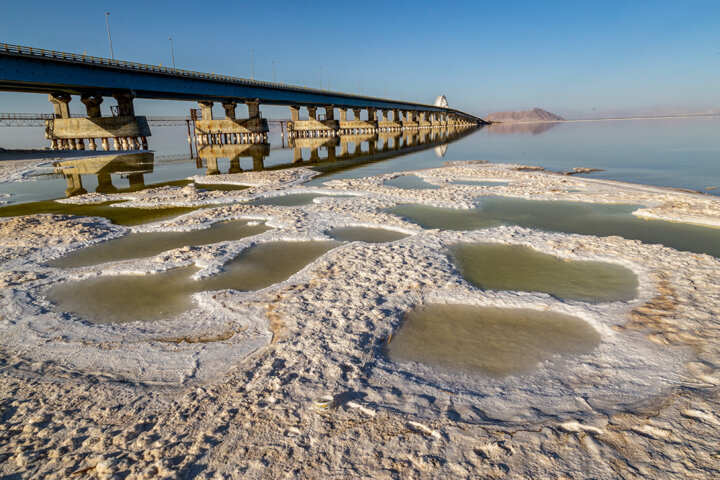
Documented Realities of Iran’s Water and Land Crisis
Official Iranian sources paint a clear picture of collapse:
– According to IRNA News Agency (October 2025), 19 major dams across Iran are near total depletion, with three reservoirs already dry.
– The spokesperson for Iran’s Water Industry reported that water reserves feeding Tehran’s dams have fallen to 258 million cubic meters — less than one-third of the capital’s annual needs — placing the city at real risk of “Day Zero.”
– A Majlis Research Center report warned that land subsidence now affects 29 provinces, reaching up to 25 cm per year in Isfahan.
– During a parliamentary session in January 2022, the Deputy Minister of Energy admitted that “water releases from dams were meant to protect hydroelectric plants, not to alleviate drought.”
– The Department of Environment officially acknowledged that constructing the Gotvand Dam was a “strategic mistake,” adding that its destruction is the only solution to restore the Karun River.
These official confessions reveal that Iran’s environmental crisis is not the result of nature, but of systemic corruption and policy failure under the mullahs’ regime.
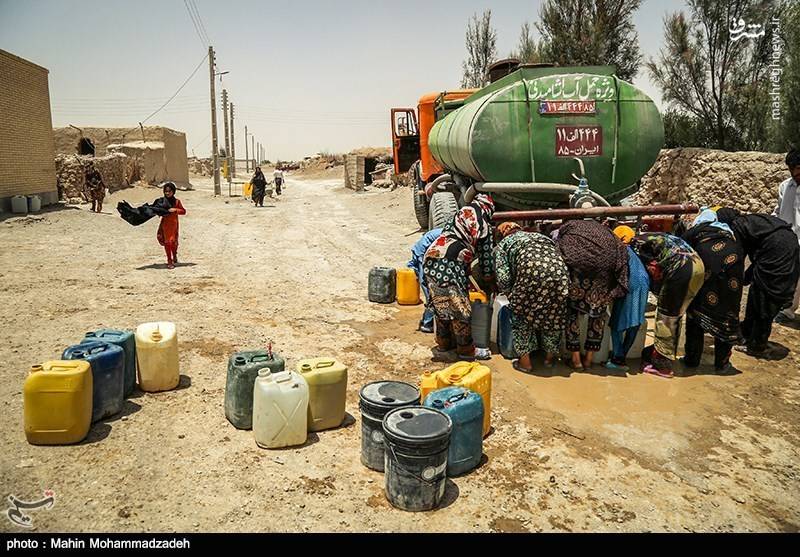 Regional Map of Iran’s Crisis (Area by Area)
Regional Map of Iran’s Crisis (Area by Area)
- Central Region (Isfahan–Yazd–Chaharmahal): Severe land subsidence and domination of water transfer projects have destroyed traditional agriculture. Farmers have repeatedly protested with the slogan “Water and Life.”
• Northwest (Azerbaijan): Lake Urmia is on the verge of ecological collapse, with livelihood and health impacts across dozens of towns and villages.
• Southwest (Khuzestan): Salinization of the Karun River due to Gotvand Dam, water cuts in over 50°C heat, and tanker-based water supply have caused widespread skin and intestinal diseases.
• Capital (Tehran): Persistent decline in dam reserves and chronic water shortages, alongside repeated official warnings over potable water sufficiency, bring the “Day Zero” scenario closer.
Protests and Strikes Related to Water and Energy (Field Facts)
– Water protests in Khuzestan and Isfahan: consecutive gatherings demanding “clean water, flowing rivers, and the right to life” were met with violent repression, including live fire and arrests.
– Related labor protests: strikes by oil and gas workers in Assaluyeh and South Pars, as well as bakery and municipal workers, show that the water–energy crisis has reached household economies and disrupted vital supply chains.
– Environmental activists: arrests and convictions of scientists and campaigners warning of risk have silenced the very segment of society that should contribute to prevention.
The call for “Water and Life” now echoes from streets to workplaces and farms, while the regime’s security response itself has become a producer of risk — directly linking water scarcity to human rights violations.
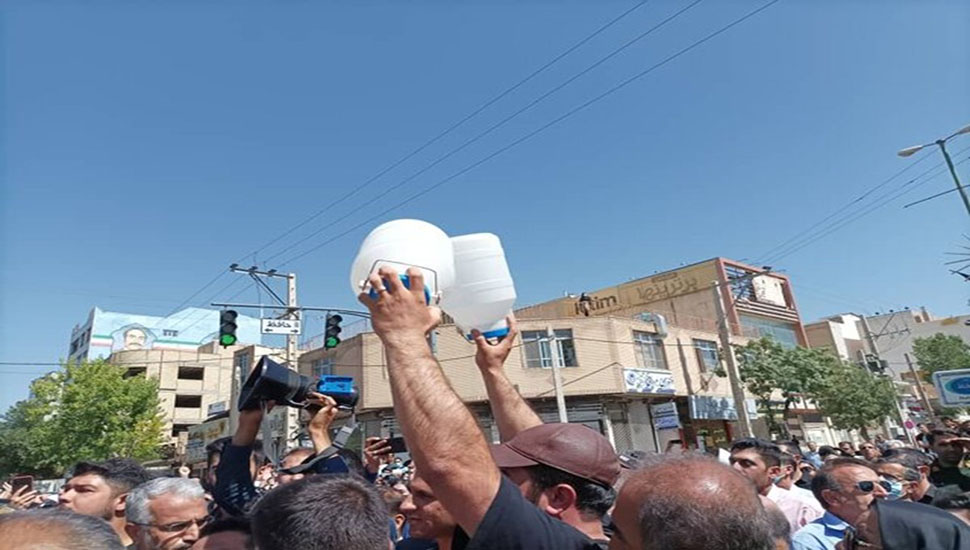 Man-made Disasters: The IRGC’s Monopoly over Water Policy
Man-made Disasters: The IRGC’s Monopoly over Water Policy
Extensive dam construction without environmental assessment, inter-basin water transfers to military-linked industries, and destruction of wetlands have turned natural challenges into human-made disasters. Experts inside Iran warn that the IRGC’s Khatam al-Anbiya Construction Headquarters controls most national water projects, spending billions of dollars from public funds on ventures that create new risks. In the Karun basin, Gotvand Dam has salinized water and devastated Khuzestan’s agriculture, while in Isfahan, diversion of water to heavy industries has dried up the Zayandeh Rud River and worsened subsidence.
Suppression and Secrecy: Violation of Participation and Transparency
Under the mullahs’ regime, disaster management is monopolized by military and security entities. Data on dam levels, groundwater quality, and environmental losses are classified as state secrets. During the 2019 floods and subsequent crises, officials deliberately withheld warnings to “avoid public panic,” and citizens who reported from affected areas were detained. Environmental researchers and activists have been prosecuted on national security charges, violating the Sendai Framework’s principle of inclusive participation.
Human Impact and Environmental Protests
Water and energy crises have disrupted the lives of millions. In Khuzestan, residents depend on tankers for drinking water amid extreme heat; contamination has led to gastrointestinal and skin diseases. In Isfahan, farmers demanding water were met with violence by security forces. Across Iran, rolling blackouts and water cuts during heatwaves have caused public health emergencies and intensified poverty.
Expansion of the Crisis to Livelihoods
In September and October 2025, water and energy shortages overlapped with economic unrest. Oil and gas workers in Assaluyeh and South Pars, bakery workers in Saveh, and municipal drivers in Kermanshah went on strike against wage discrimination and corruption. This overlap shows that environmental decay has penetrated Iran’s economy, linking drought, inflation, and repression into a continuous cycle of risk.
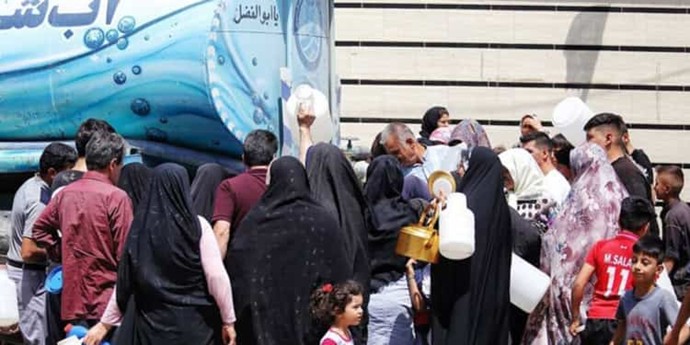 International Reactions and Warnings
International Reactions and Warnings
Amnesty International condemned the use of live ammunition against protesters in Khuzestan and called for an independent investigation. Human Rights Watch stated that the mullahs’ regime’s mismanagement of water and energy “threatens the biological security of millions.” The UN Special Rapporteur on Iran emphasized that systemic impunity and secrecy are ongoing violations of economic and social rights. UNEP ranked Iran among the top five countries with the highest land subsidence rates globally.
Repeating Pattern of Corruption and Catastrophe
| Disaster | Year | Type of Risk | Consequences | Human Rights Violations |
| Kermanshah Earthquake | 2017 | Collapse of state-built housing | Corruption, hundreds killed | Right to life & safe housing |
| Nationwide Floods | 2019 | River encroachment, lack of warning | Mass displacement, delayed aid | Right to information & safety |
| Khuzestan Water Crisis | 2021–2025 | Dam mismanagement, salinity | Protests, violent repression | Right to clean water & participation |
Conclusion
In Iran under the mullahs’ regime, none of the Sendai Framework’s principles are respected. Institutional corruption, IRGC control over crisis management, and judicial impunity perpetuate state-made risks. International organizations emphasize that accountability for environmental destruction requires independent monitoring and support for Iran’s civil society.
Iran is a rich and beautiful land, but under the rule of the mullahs’ regime it has become one of the world’s most vulnerable nations to disaster. Here, catastrophe is no longer natural — it is the deliberate outcome of corruption, repression, and the politics of survival.

